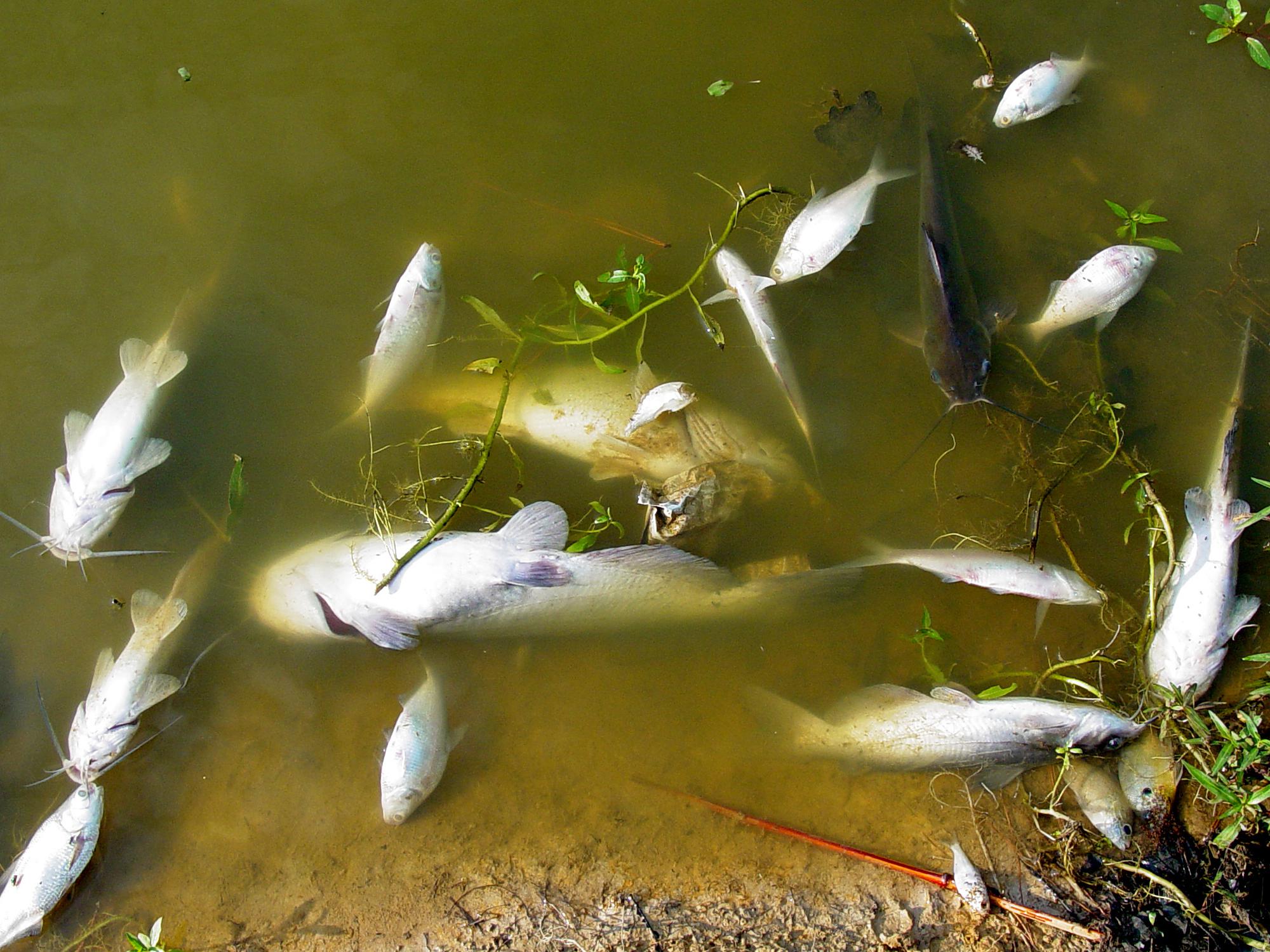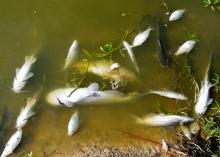Information Possibly Outdated
The information presented on this page was originally released on February 23, 2018. It may not be outdated, but please search our site for more current information. If you plan to quote or reference this information in a publication, please check with the Extension specialist or author before proceeding.
Prevent fish kills in backyard ponds
STARKVILLE, Miss. -- From February through April, calls begin coming in about sick and dying fish in backyard ponds.
Usually, it is a few fish per day -- often catfish, but sometimes a mixture of species -- and the die off may continue for several weeks. Fish often show external signs of distress, including red sores, patches of fungus, and large ulcers in the head or back. All sizes of fish are affected. Upset pond owners often wonder who is out to get them, but it is highly unlikely that someone poisoned their fish.
The problem is most likely the pond water itself. Many locations in Mississippi have underlying geologies that are low in dissolve ions. Alkalinity, which is a measure of the negatively charged ions dissolved in the water, acts as a buffer for pH changes in a pond. Alkalinity encourages primary productivity in ponds and helps prevent wide swings in pH.
Similar to alkalinity, water hardness is the overall concentration of positive ions. Hardness reduces fish stress in ponds and provides important elements, such as calcium and magnesium, for animal survival.
For good fish health and growth, we recommend alkalinity and hardness values of at least 20 milligrams per liter. When values are below that level, fish tend to grow slowly, the pond is not very productive, and fish may become stressed and die.
These problems are especially severe during this time of year when weather is unpredictable. Some nights are below freezing, while others feel like a midsummer eve. Heavy storms bring influxes of cold or warm water, and rainwater is very low in alkalinity. These changes stress fish, making them susceptible to disease and infections.
External signs of disease are usually secondary, which means the fungus or bacterial ulcer you see on dead or dying fish is not the cause of the problem. It opportunistically invades an already sick or stressed fish.
The solution to poor water chemistry is relatively simple. To overcome low ion concentrations, you must add ions. The best way is to apply agricultural limestone. Liming provides major benefits if you are growing sportfish in a pond with poor water chemistry. Limestone reduces the acidity of the bottom soils, which makes nutrients more available and increases the alkalinity and hardness of the water. These improvements reduce stress on the fish over the winter.
Application of limestone typically eliminates early-season fish die-offs for several years. However, ions will gradually be flushed from the pond, so liming may be needed every three to five years to keep water chemistry at appropriate levels.
If you suspect your pond may suffer from low alkalinity and hardness, contact your county Extension office to have the total alkalinity of the water tested. Be sure to ask for alkalinity, not pH, as pH can fluctuate hourly in ponds with poor alkalinity. If alkalinity is below 20 milligrams per liter, liming would benefit the fish population.
For more information, call your local county agent and request Extension Publication 1428, “Managing Mississippi Farm Ponds and Small Lakes.”

Editor’s Note: Extension Outdoors is a column authored by several different experts in the Mississippi State University Extension Service.





